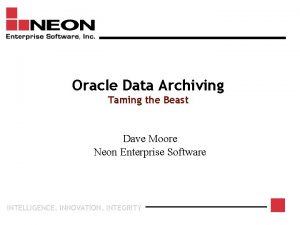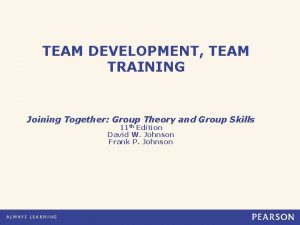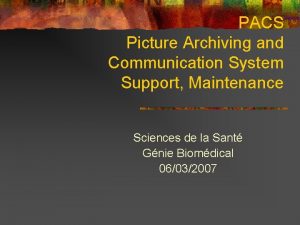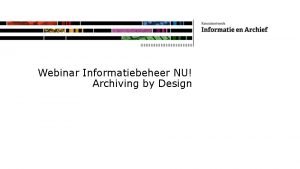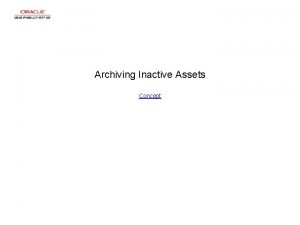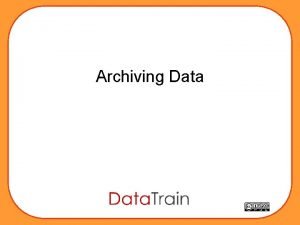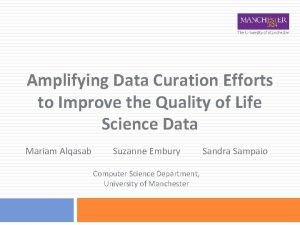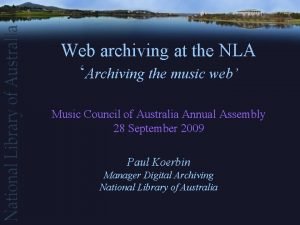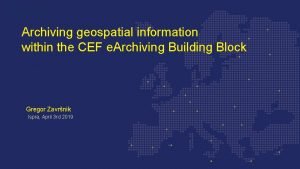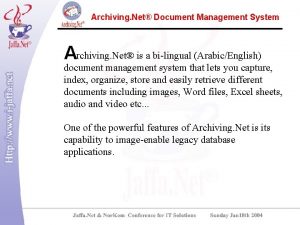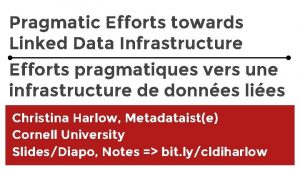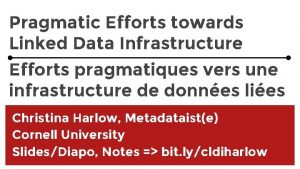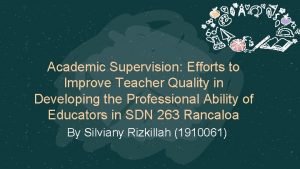Efforts to improve accelerometric data quality and archiving













- Slides: 13

Efforts to improve accelerometric data quality and archiving in Europe Sinan Akkar Earthquake Engineering Research Center Middle East Technical University Ankara, Turkey Earthquake Engineering Research Institute Middle East Technical University

Outline • Past and current efforts to increase the quality and dissemination of accelerometric data in Europe and surrounding countries • Achievements and possible future actions for the sustainability of these efforts

Already finished, almost finishing and in progress projects in and around Europe o Work carried out by the Imperial College group o National projects (Turkey and Italy) o International projects o o o NERIES SHARE EMME NERA SIGMA

Studies conducted under the leadership of Imperial College o Collecting strong-motion data started in 1971 o A CD-Rom is published in 2000 (1068 mainly triaxial accelerograms o A web site (ISESD) is established in 2002 (2213 accelerograms from 856 earthquakes and 691 stations o Raw and processed records, their elastic response spectra, seismological information on earthquakes and basic information on sensors Ambrasseys et al. (2004)

Studies to compile Turkish strongmotion data o A total of 4607 (1976 -2007) accelerograms are compiled o Data are processed systematically o Site characterization of stations are done from geophysical and geological measurements o Earthquake metadata information are compiled from 18 different catalogs o A web site is established under the management of AFAD (owner of national strong-motion network) Akkar et al. (2010)

Studies to compile Italian strongmotion data • A total of 2182 accelerograms (1972 -2007) from 1004 earthquakes are compiled – Uniform data processing as well as homogenous earthquake and station metadata information – The ITACA web site for disseminating the data Luzi et al. (2008)

Studies for the compilation of SHARE strong-motion databank (SHARE SM DB) o Project-specific SHARE SM DB is composed of 14193 records from 2448 worldwide earthquakes. o Open-source databases used in compilation: o o o Kik-Net ESMD/ISESD NGA T-NSMP ITACA o No specific studies to improve metadata or waveform quality. Only removal of duplicated records from the considered databases. Yenier et al. (2008)

Studies for the compilation of EMME strong-motion databank (EMME SM DB) o Project-specific EMME SM DB is composed of recordings from Turkey, Iran, Jordan, Caucuses (Georgia and Armenia) and Pakistan o Uniform data processing, homogenous event and station metadata information o A total of 4994 accelerograms Country-based data distribution of EMME SM DB Courtesy of Ö. Kale

Studies for the compilation of RESORCE (SIGMA) strong-motion databank o Project-specific RESORCE SM DB is the elaborated and extended version of SHARE SM DB to improve the quality of pan. European accelerometric data. o Includes the most recent data from Greece, Italy, Turkey, France and Switzerland on top of those included in SHARE o Uniform data processing, homgenous event and station metadata information Yearly distribution of data included in the RESORCE SM DB (5154 records from 1664 events recorded at 1448 stations) Akkar et al. (2013)

NERIES – NA 5 o Backbone studies in the Euro-Mediterranean region to establish the near-real time accelerometric data exchange infrastructure o Initial steps in data exchange protocols and station information o Initial steps in reliable data processing of near-real time accelerometric data o Initial steps in SHAKE maps

Achieved/not achieved o Each individual project improved the data quality and extended the data limits according to the major project deliverables o Researchers involved in these projects learned (improved) state-of-the-art methods in data compilation, processing, exchange etc o No sustainability o No objective quality control (community consensus on the delivered product) o Limited transfer of knowledge / information to engineering and seismological community ü

NERA – NA 3 o Fine tuning and completion of data exchange and processing of near-real time data (RRSM) o Establishing an infrastructure for the communication between RRSM data and conventional static strongmotion data (ESM): Integrated Dynamic European Strong. Motion Databank o Networking among accelerometric data providers to invite them for supporting these efforts Courtesy of John Clinton, Carlo Cauzzi and Philip Kästli

Future actions: main discussions in this WS o Valuable and useful experience about establishing accelerometric databases does exist in the broader European context o A comprehensive work has been conducted by the NERANA 3 group to establish a prototype infrastructure that can lead to high quality dynamic European strong-motion databank o This infrastructure (together with the existing experience) should be coordinated by an international consortium that consists of data providers under a non-profit establishment. o The interaction between the consortium and EPOS is important as EPOS can shape the future projects in geosciences at European level o These actions (upon their refinement) would make these efforts sustainable in the long run
 Oracle database archiving solutions
Oracle database archiving solutions Joining together as a team to improve the quality
Joining together as a team to improve the quality Asset data to improve cmdbs and it systems
Asset data to improve cmdbs and it systems Picture archiving and communication system
Picture archiving and communication system Exchange 2010 email archiving
Exchange 2010 email archiving Europe healthcare archiving and ediscovery market outlook
Europe healthcare archiving and ediscovery market outlook Data cleaning problems and current approaches
Data cleaning problems and current approaches Data quality and data cleaning an overview
Data quality and data cleaning an overview Data quality and data cleaning an overview
Data quality and data cleaning an overview Economics
Economics Quality assurance vs quality control
Quality assurance vs quality control Basic concepts of quality control
Basic concepts of quality control Bell sms archiving
Bell sms archiving Archiving by design
Archiving by design
